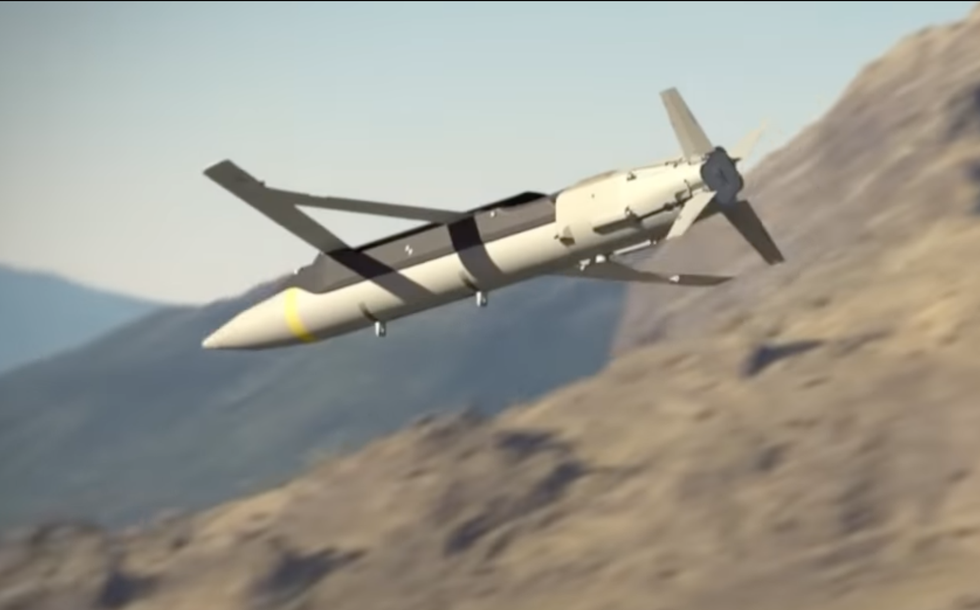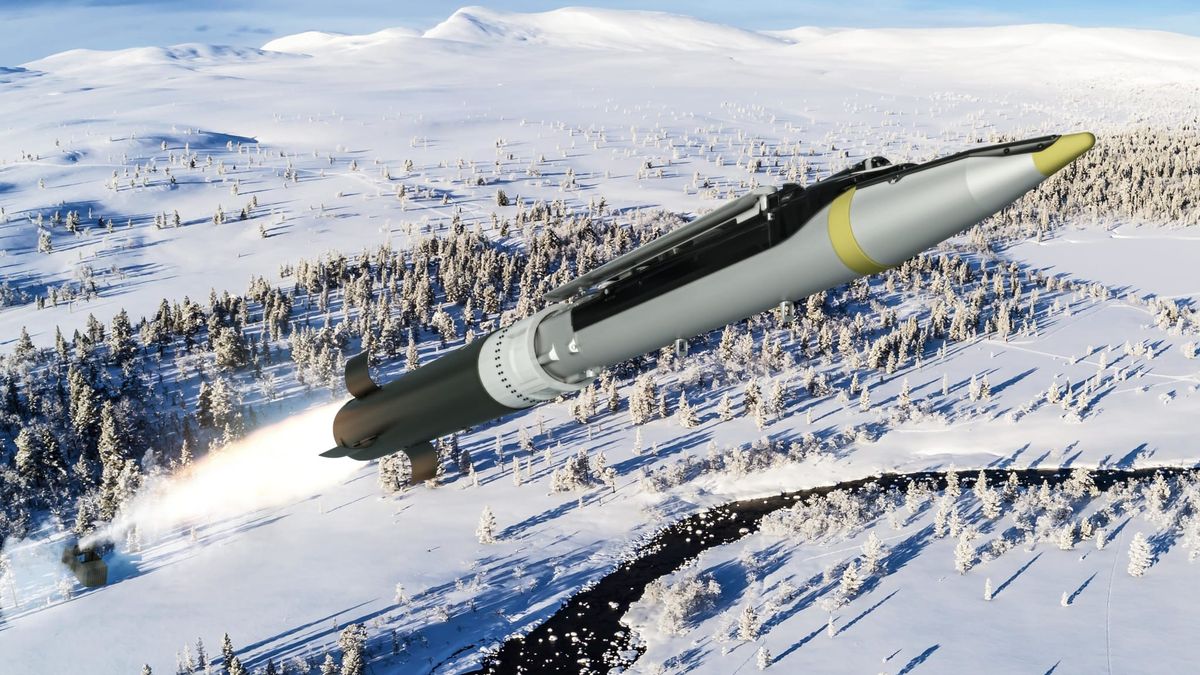Un desarrollo conjunto entre las empresas BOEING (USA) y SAAB (Suecia) que viene siendo ensayado desde 2015, ha recibido un renovado impulso con motivo de la invasión de Rusia a Ucrania. Este último país requiere de misiles tácticos de mayor alcance y precisión, que puedan ser disparados desde los Lanzadores HIMARS (High Mobility Rocket Artillery System) provistos por EUA y NATO. Las citadas empresas aportaron una posible solución de bajo costo y alta disponibilidad, a esa limitación en alcance y precisión. La misma consiste en utilizar los importantes stocks de bombas GBU-39 (SDB – Small Diameter Bomb), ensambladas con los motores cohete M26, que también son disparados desde el HIMARS y de los que existen reservas suficientes. Ello permitiría proveer a Ucrania con sistemas GLSDB (Ground Launched Small Diameter Bomb), que lanzados desde HIMARS otorgaría la capacidad de batir blancos en la profundidad del dispositivo enemigo, de manera muy precisa hasta 150 km de distancia.
- The Pentagon is considering arming Ukraine with the Ground-Launched Small Diameter Bomb (GLSDB).
- Ground-Launched Small Diameter Bomb combines an air-dropped precision-guided bomb with the HIMARS rocket system.
- The resulting weapon can reach farther than existing HIMARS and is more accurate.
The Department of Defense is weighing an offer from Boeing to provide Ukraine with a new rocket-powered glide bomb. The Ground-Launched Small Diameter Bomb (GLSDB) pairs a 250-pound aircraft bomb with a GPS seeker, wings, and a rocket motor, giving it the range to strike targets more than twice as far as Ukraine’s existing Guided Multiple Launch Rocket Systems (GMLRS). The weapon would allow Ukrainian rocket troops to strike farther and deeper behind Russian lines, laying the groundwork for the eventual liberation of Kyiv’s lost territories.
According to Reuters, Boeing has proposed the Ground-Launched Small Diameter Bomb as part of a military aid package to Ukraine. GLSBD, first tested in 2015, is a new weapon that is built around a MK.-81 250-pound bomb. A MK.-81 is an aircraft-delivered bomb that weighs 264 pounds with a 99-pound payload of Tritonal or Comp-B (RDX and TNT) explosives. The MK.-81 is a “dumb” bomb—dropped by a bombardier or pilot—that free-falls along a short, uncorrected ballistic path to the target.
A Brief History of the Ground-Launched Small Diameter Bomb

In the 1990s, the U.S. pioneered new GPS-guided “smart” bombs. These were bombs fitted with a GPS receiver and steering fins, giving the bomb the capability to self-steer to a precise set of GPS coordinates. In the 2000s, it was followed up with the addition of pop-out wings that allowed the bombs to glide toward their targets, boosting their attack range. The higher the altitude at which a glide bomb is released, the farther it can glide. The glide version of the MK.-81, the GBU-39B Small Diameter Bomb, can attack targets up to 40 miles from the release point.
In the 2010s, Boeing and SAAB developed the Ground-Launched Small Diameter Bomb. GLSDB attaches a rocket motor—the same kind GMLRS rockets use to fire from HIMARS rocket trucks—to the Small Diameter Bomb. The rocket propels the bomb to what must be a considerable altitude, as the GLSDB has a range of 93 miles, more than twice as much as an aircraft-delivered Small Diameter Bomb. Here’s a video of GLSDB in action:
Why the Ground-Launched Small Diameter Bomb Could Thrive in Ukraine
GLSDB, although innovative, has so far failed to attract customers. However, the new weapon could be a perfect fit for the war in Ukraine. Ground-Launched Small Diameter Bombs use HIMARS trucks already in service with the Ukrainian Army as a launch platform; while it has half the explosive payload of Ukraine’s GPS-guided GMLRS rockets, it can hit targets more than twice as far away. It is also even more accurate than GMLRS, capable of striking within three feet of the designated target, instead of the existing rocket’s six to 15 feet.

Another positive for GLSDB is that it can be produced rapidly from existing weapons: both the GBU-39B Small Diameter Bomb and M26/M30 rocket motors are readily available. The weapon itself is not currently in the Pentagon’s arsenal, meaning war planners aren’t counting on them as part of contingency planning—especially against China. GLSDB uses no real breakthrough technologies, meaning the Russians won’t get their hands on new tech simply by capturing a dud bomb.
GLSDB would be the biggest game-changer since the introduction of HIMARS in June of this year. The Ukrainian military has used HIMARS and its GMLRS rockets to accelerate the deterioration of Russian forces in occupied Ukraine, depriving them of supplies and artillery support, and effectively isolating them on the battlefield. The combination of GLSDB and the debilitating effects of winter weather could be of tremendous help to Ukrainian forces battling to liberate their country.
GLSDB is the Reese’s Peanut Butter Cup of the long-range strike: two well-known and proven technologies combined into a brand-new long-range strike weapon. There is one catch: in order to begin production, Reuters notes, the Pentagon would have to waive cost discovery, a process “that ensures the Pentagon is getting the best deal possible.” If that happens, GLSDBs could be winging their way to Russian positions by early 2023.
Fuente: https://www.popularmechanics.com


